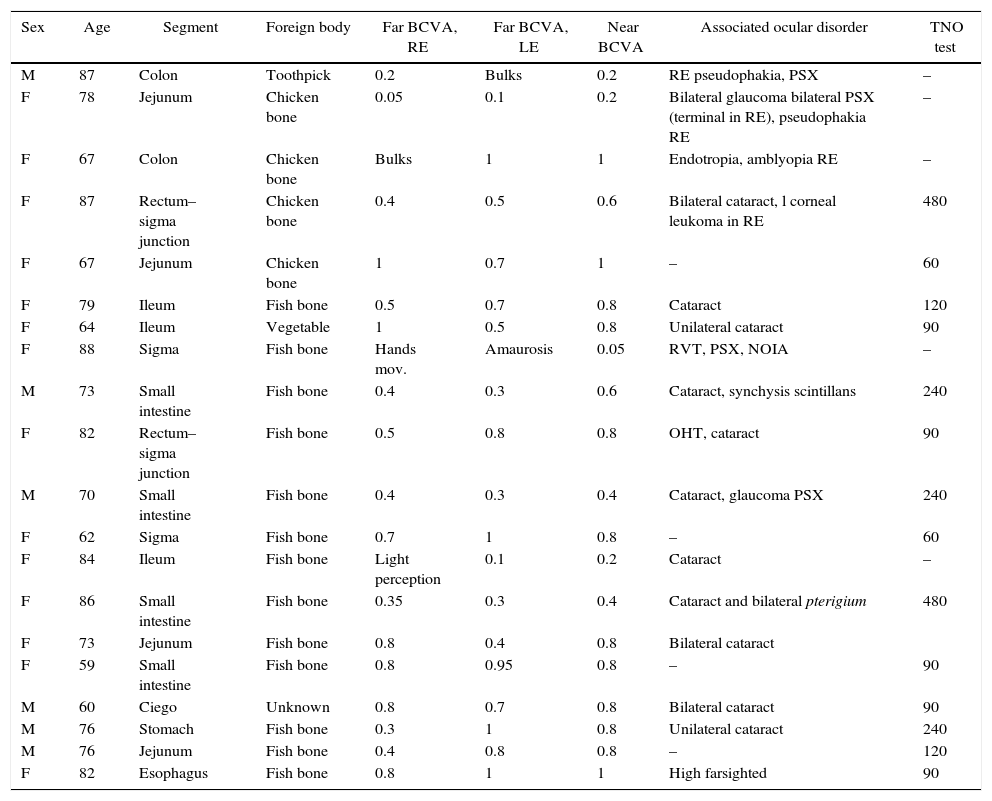Intestinal perforation due to ingestion of a foreign body accounts for 21% of the total in our hospital.
MethodsAll cases of intestinal perforation due to foreign body ingestion occurring since 1990 were collected (29 cases), and the visual characteristics of these patients were analyzed.
Results and discussionThe mean age was 74.2 years (all of them presbyopic) with the majority being female (1.9:1). The most frequently ingested foreign body was fish bone (55%). The corrected near visual acuity obtained a mean value of 0.73, while the real visual accuity (only one of them wore glasses to eat) was 0.145. Four patients (20%) had only one eye, and the TNO test was positive in only 12 (60%). At least 13 (65%) had some degree of cataract.
ConclusionsImproving near visual acuity with either early cataract surgery and/or multifocal intraocular lenses may decrease the number of gastrointestinal perforations.
Las perforaciones digestivas por ingestión de cuerpo extraño (CE) suponen un 21% del total en nuestro medio.
MetodologíaSe recogen todos los casos de perforación del aparato digestivo por ingestión de CE desde 1990 (29 casos), de forma retrospectiva, y se analiza las características de la visión de estos pacientes.
Resultados y discusiónLa edad media fue de 74,2 años (todos présbitas), con predilección por sexo femenino (1,9:1). El CE ingerido con más frecuencia fue la espina de pescado (55%). La agudeza visual de cerca corregida obtuvo un valor medio de 0,73, si bien la real (solo uno de ellos usaba gafa para comer) era de 0,145. Cuatro de ellos (20%) eran ojos únicos, y solo 12 (60%) presentaba TNO+. Al menos 13 (65%) tenían algún grado de catarata.
ConclusionesLa mejora de la agudeza visual de cerca, ya sea con cirugía de catarata temprana y/o lentes intraoculares multifocales podría disminuir el número de perforaciones digestivas.






